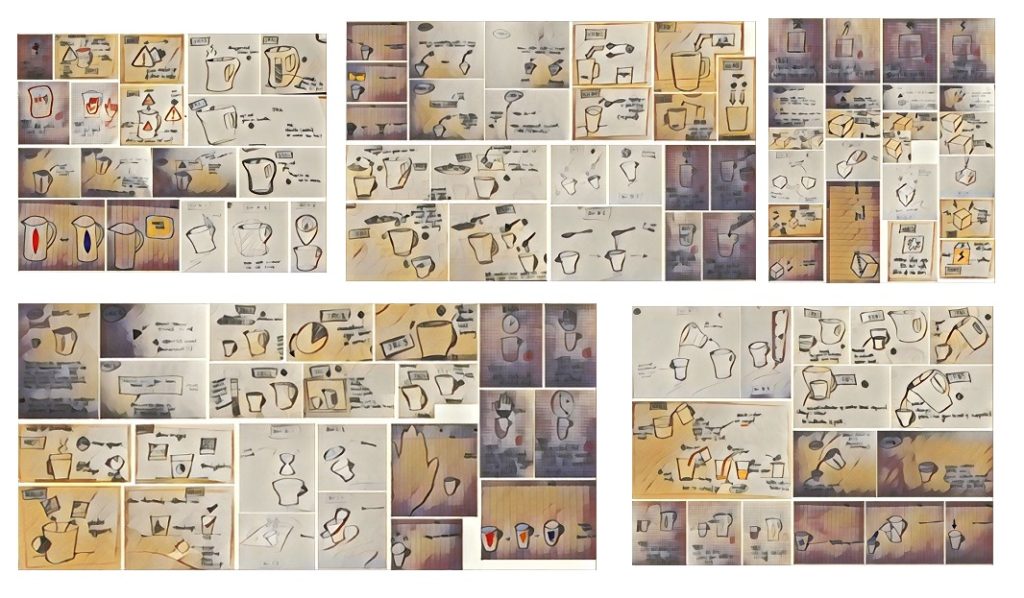Last week, I completed the first step of my plan for developing an online study, which was to run an ideation session with the Design Team at Designability. In this blog post, I will describe the aim of the session and how it was structured, briefly show you what the team came up with and what they thought of the session, and then explain the next steps for the designs.
Aim of the session
I invited members of the design team to take part in a creative session to come up with as many designs as possible for how to convey certain scenarios in the home using augmented reality. The scenarios included warning somebody that something is hot, cold, sharp, or electrified, as well as how to communicate quantities or encourage a user to wait while something happens.
Prior to the session, I sent the participants a design brief to clearly define the scope of the session. I included a definition of augmented reality for the purpose of the session, since I wanted them to focus on visual prompts and did not want the designers to worry about how the prompts would be delivered. I also included the scenarios that they would be considering in the session, so they had a a chance to think about them beforehand.
Structure of the session
Sessions lasted an hour and a half and were split into two main parts, sketching and presenting. I actually ran two sessions to keep the number of participants at a manageable level. There were three people in each session, and so six people took part in total. We used Microsoft Teams to meet up, and I shared a summary of the design brief on the screen for reference. This made it easy for the participants to remember exactly what it was I was asking them to do.
After a short briefing, where I described the task, including giving participants the opportunity to ask questions, we got started with sketching. I gave participants about 6 minutes for each scenario (though they didn't know exactly how long they would have), and provided half-time and one-minute-left notifications. Although 6 minutes doesn't sound like a long time, because there were five scenarios to consider, this part took just over half an hour. As you'll see further down, there was enough time for everyone to produce a range of ideas.
After a short break, we reconvened to move onto the presenting part. First of all, I asked participants to rank their ideas from best to worst for each scenario. Then, we went through each scenario in order and I invited them to describe their best and worst designs, giving a justification as to why they chose them.
For the end of the session, I had prepared some questions for an open discussion in whatever time remained after presentation of ideas. The questions allowed us to start exploring additional considerations, such as what would change in the designs if audio could be used or the scenarios were considered as a part of a larger task.
How did the team get on?
The team came up with a wealth of ideas, and I am so pleased with the output of the session. I've collated all of their designs below in a simple collage just to show the variety of ideas, though I don't want to give too much away.

I had some very positive feedback from my colleagues, who said that the session was planned well. They all enjoyed taking part, and I was happy to have provided an opportunity for them to get together for some collaborative creativity whilst working from home.
What next?
The next step is to categorise all of the designs to find common characteristics of the sketches, and then prototype AR prompts that I can use in an online study. My supervisors and I are still in the process of designing the study, but keep an eye out for opportunities to take part!
If you have any questions about my planning process or how I ran the session, please feel free to get in touch. I'd be more than happy to share my approach, and elaborate on some of my decisions.
Respond